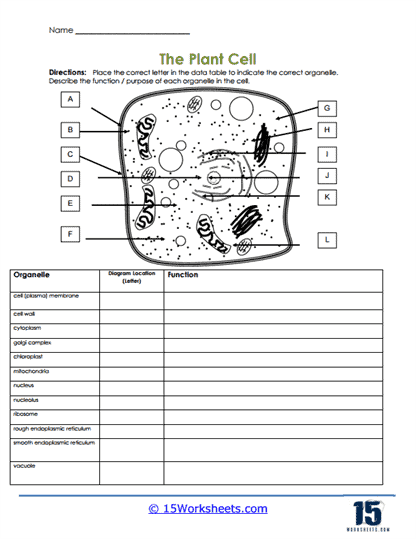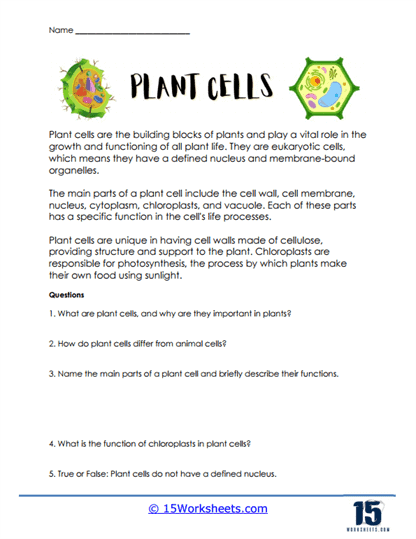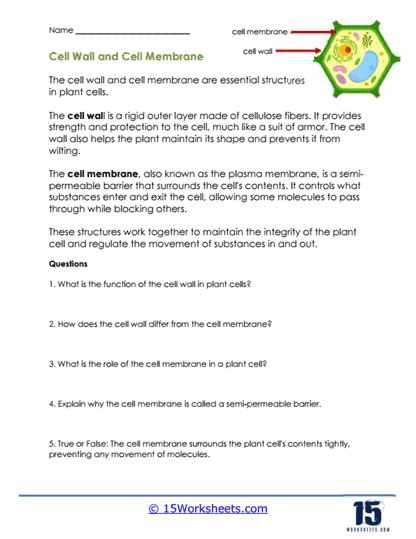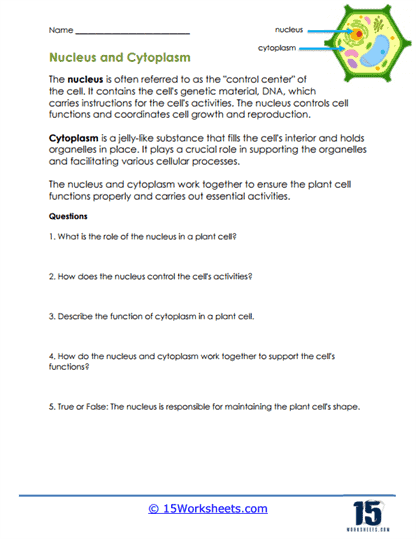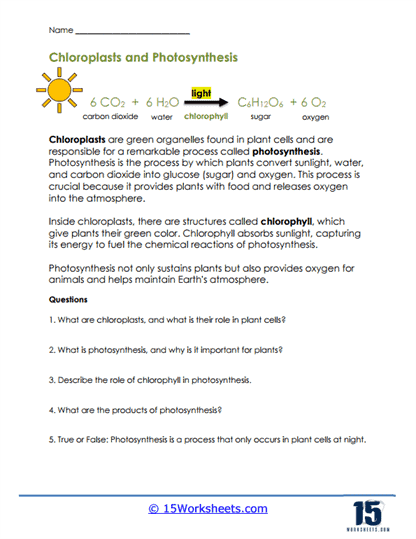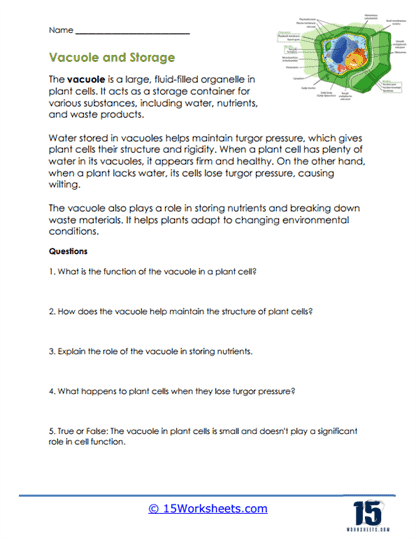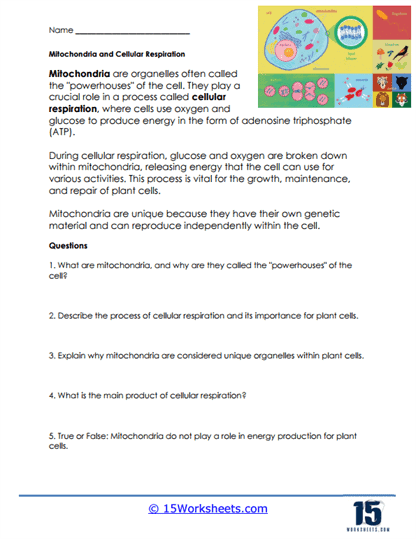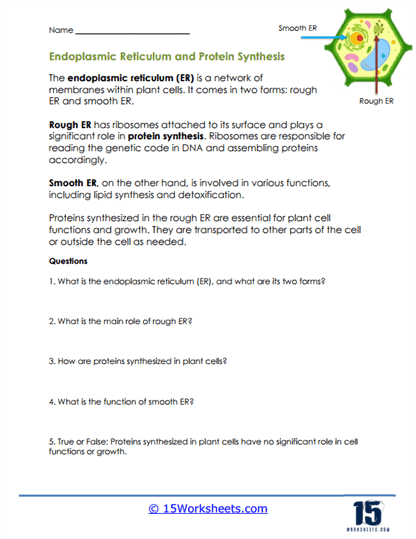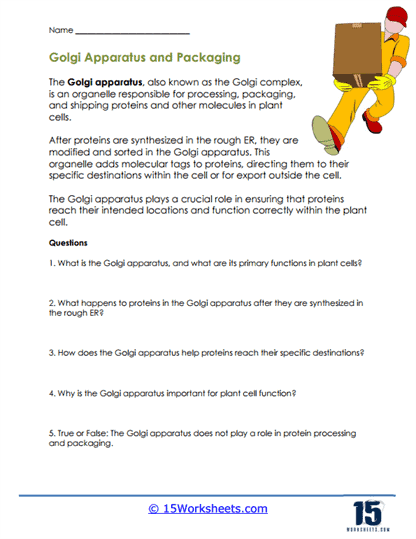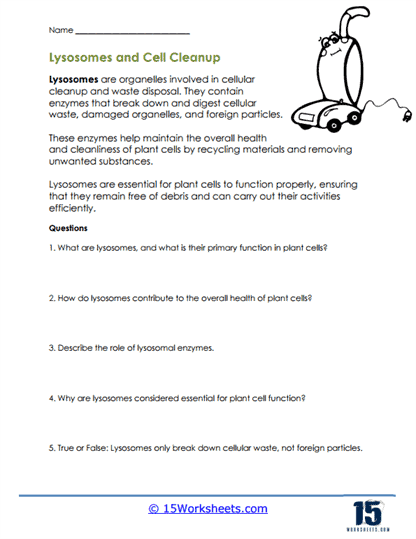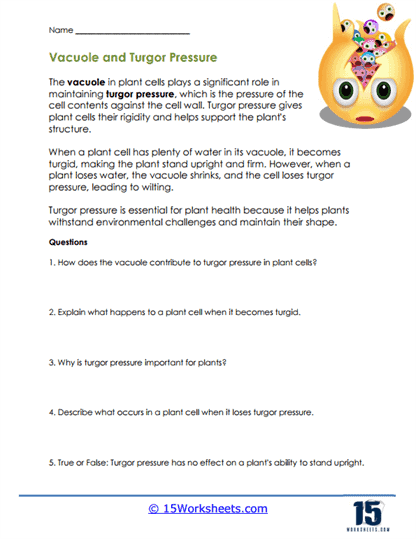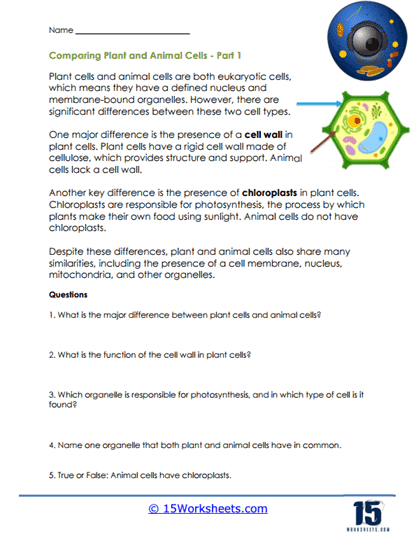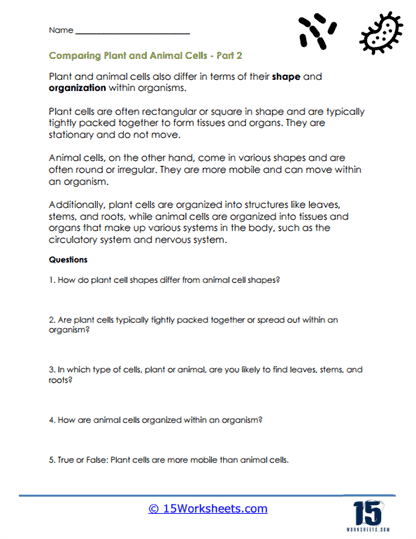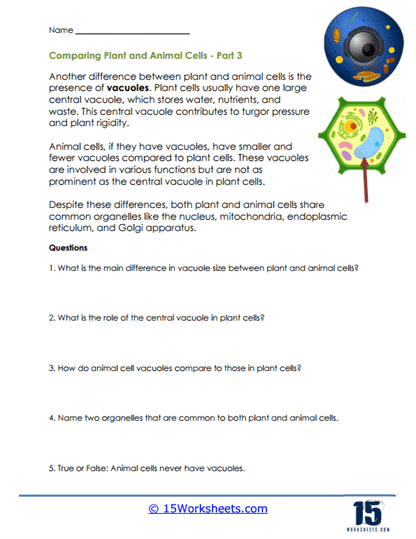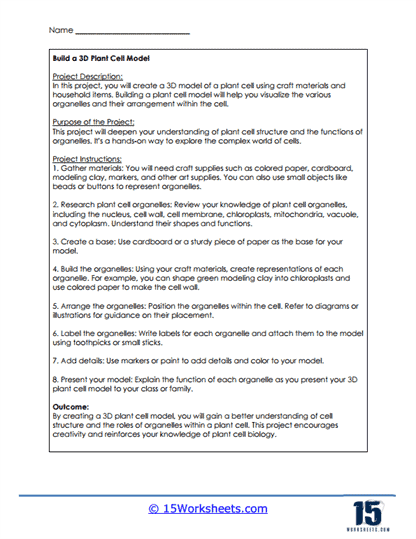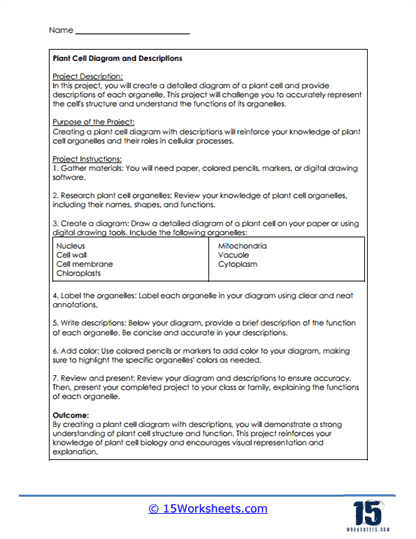Plant Cells Worksheets
About These 15 Worksheets
Plant cells, with their intricate structures and vital functions, form the foundation of all plant life on our planet. Understanding them is not merely an academic exercise but is crucial for grasping broader ecological and environmental concepts. Plant cells form the fundamental units of vegetation, from towering redwoods to humble mosses. They play a pivotal role in photosynthesis, growth, and reproduction. Understanding the structure and function of plant cells is crucial in botany and for anyone keen on understanding life on Earth.
Plant cell worksheets, with their plethora of exercises, ensure that learners obtain a comprehensive, multi-faceted grasp of these cellular marvels. Whether through labeling exercises, in-depth essays, or hands-on group activities, students gain a holistic appreciation of the tiny powerhouses that drive the green world around us.
Types of Exercises
Multiple Choice Questions (MCQs) – These test the student’s foundational understanding.
Example: Which organelle is responsible for photosynthesis? (A) Mitochondria (B) Chloroplast (C) Nucleus (D) Lysosome.
True or False – To check basic facts and dispel misconceptions.
Example: Plant cells lack a defined nucleus. (True/False)
Fill in the Blanks – Assesses recall and comprehension.
Example: The _____ provides rigidity and support to a plant cell.
Diagram Labeling – Students are given a diagram of a plant cell and asked to label its parts.
Example: Label the following organelles in the plant cell diagram: Cell Wall, Chloroplast, Vacuole.
Matching Exercises – These help reinforce terminologies and definitions.
Example: Match the organelle with its function: Chloroplast – _____, Vacuole – _____.
Short Answer Questions – To test deeper understanding and the ability to explain concepts.
Example: Describe the role of chloroplasts in plant cells.
Comparative Questions – Asking students to differentiate between concepts.
Example: Compare and contrast plant cells and animal cells.
What Are Plant Cells?
Plant cells are the basic structural and functional units that make up plants. Just like all living organisms are made up of cells, plant cells are the microscopic components that come together to form everything from the smallest mosses to the grandest redwoods. They are eukaryotic cells, which means they possess a defined nucleus and other specialized structures called organelles, each enclosed within membranes.
Where Do You Find Them?
Plant cells are found throughout every part of a plant. From the roots that anchor a plant in the soil, the stems that give it structure, the leaves that play a vital role in photosynthesis, to the flowers, fruits, and seeds that are involved in reproduction – every part of a plant is made up of these cells. If you were to take a thin slice from any part of a plant and view it under a microscope, you would be looking at plant cells.


